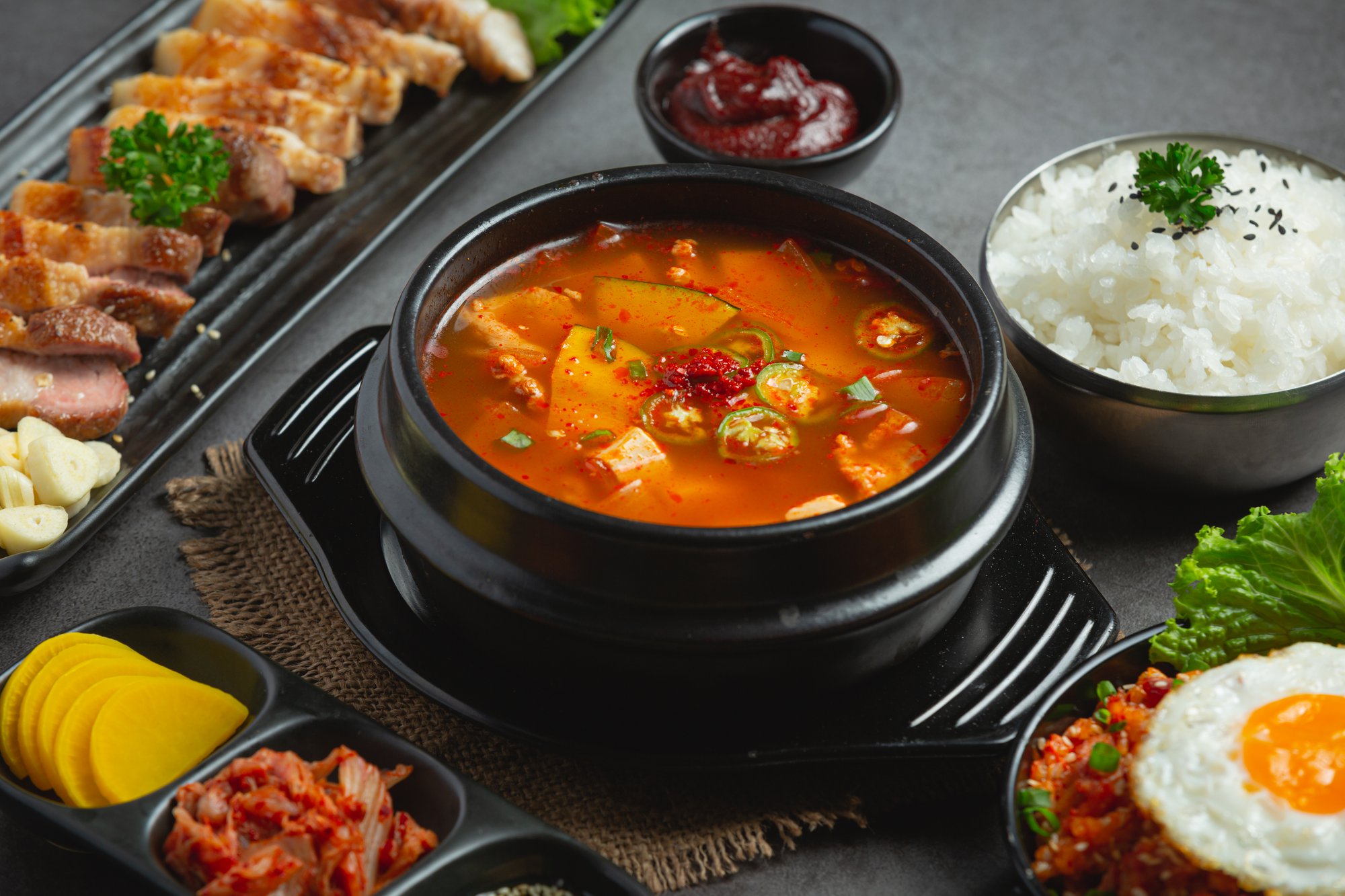
Introduction: A New Flavor Paradigm in China (2025)
China’s food and beverage market is evolving beyond a binary divide between local and global tastes. Today, global flavor inspirations are central to how Chinese consumers define what is innovative, premium, and meaningful. The real challenge for F&B innovators is not whether to introduce international flavors, but how to adapt them in a way that resonates locally.
Wander into cafés in Shanghai or dessert shops in Chengdu, and you’ll spot examples of this shift. Matcha croissants, yuzu sparkling tea, and pan-Asian fusion snacks are not simply copied from abroad. They are hybrids crafted to balance novelty with familiar tastes. These products succeed because they offer more than flavor. They deliver stories of craft, identity, and global connection that younger consumers value.
According to Mintel’s Flavour Innovation in 2025 report, 40 percent of Chinese consumers say they “look for new foods/flavours to try most of the time,” reflecting a growing appetite for flavor exploration. This trend underlines that spending on flavor is increasingly about experience and self-expression, not just taste.
In this article, we explore how global flavor trends are shaping consumer demand in China and what F&B brands must do to respond effectively. You will gain insights into demand signals, flavor archetypes, and strategic practices that connect global inspiration to localized innovation.
Flavor Innovation Drivers in China’s F&B Market: What Shapes Consumer Demand
Globalization and digital connectivity are exposing Chinese consumers to diverse cuisines faster than ever. Yet flavor innovation in China is not about simple imitation. It is about cultural translation, where flavors carry both novelty and familiarity.
Three key drivers shape this trend:
1. Younger Urban Consumers Seeking Discovery
Younger consumers, particularly those in Tier-1 cities, are adventurous and socially connected. They use food experiences to express identity and worldliness. Their curiosity for international flavors, from Korean to Mediterranean, is balanced by a desire for authenticity and a touch of local comfort.
2. Health and Functional Awareness
The growing wellness movement has pushed brands to reinvent global flavors with functional benefits. Superfoods and natural ingredients are integrated into global concepts, appealing to health-conscious consumers who still crave taste.
3. Social Media Amplification
Social media has become one of the most powerful engines shaping China’s taste trends. Research by Guo, Yang, and Gao (2024) found that the credibility of food bloggers on Douyin strongly influences how viewers form new taste preferences and desire to try specific foods. Their study, published in Behavioral Sciences, showed that when audiences perceive a blogger as trustworthy and authentic, they are significantly more likely to seek out the foods featured in the content. These insights highlight why influencer credibility and storytelling are critical for F&B innovators aiming to accelerate flavor adoption in China.
Global Flavor Archetypes Winning in China
Below are four flavor archetypes that are gaining traction in China’s F&B market. Each archetype includes examples of brands or products, how consumers interpret them, and suggestions for implementation.

1. Pan-Asian and Regional Blends
Examples:
- YuzuValley based in Zhejiang offers yuzu juice, soda water, and other beverages that blend local produce with yuzu from Japan. It maintains “0 fat, 0 coloring, 0 preservatives” messaging.
- Seventeen Light Years Yuzu Jasmine Flavor Liqueur by Shanghai LIGHT-YEAR LIQUOR Co., Ltd introduces yuzu and jasmine flavour in a low-alcohol liqueur targeting young social drinkers.
Consumer interpretation:
These flavors feel exotic but familiar. They are often seen as elevated and fashionably international, especially when the flavor is citrus or floral and balanced rather than overwhelming.
Innovation tips:
Test milder versions first. Adjust acidity and bitterness carefully. Pair citrus or floral accents with familiar Chinese ingredients so that customers do not feel alienated.

2. Western Culinary Twists
Examples:
- IRVINS Salted Egg snacks offer salted egg fish skins, potato chips, and cassava chips with both original and spicy variants. The salted egg flavour has become associated with premium, indulgent snacking. (Retail in Asia report on IRVINS)
- Franzzi Cookies produce matcha-cranberry-salted-egg-yolk-flavoured cookies, blending classic Western dessert profiles with bold Asian flavour inflections. (Franzzi Cookies product listing)
Consumer interpretation:
These twists are perceived as premium and artisanal. They suggest culinary craftsmanship and often target consumers looking for “luxury comfort” in snacks.
Innovation tips:
Pair Western elements like cheese or herbs with Chinese textures or staple ingredients. For example, cheese + steamed bun or olive oil + lotus root to balance richness with local familiarity.
If you are seeking inspiration for your next product development project, our idea bank of 41 food and beverage innovations offers practical examples and insights from brands leading the way in taste innovation.

3. Functional Flavor Hybrids
Examples:
- Oom Focus offers a sparkling non-alcoholic drink that blends yuzu, ginger, turmeric and adaptogens like Lion’s Mane and Reishi. It is positioned around wellness and functional benefits.
- Tera Food & Beverage Company from Thailand presents functional beverages such as turmeric drinks with lemon juice and ginger/honey blends. These exports are appearing more frequently in China’s functional beverage space.
Consumer interpretation:
These blends offer novelty plus perceived health benefit. They allow consumers to explore new tastes while giving them a justification of wellness or immune support.
Innovation tips:
Ensure functional claims are supported by reliable ingredients, use mild flavour blends, and test consumer tolerance for bitterness or spice. Certifications or clean-label messaging help legitimize the offering.

4. Dessert-Savory Crossovers
Examples:
- Lay’s Salted Egg Potato Chips (China edition) integrate salted egg yolk flavour into classic potato chips, balancing creamy, salty, and slightly sweet notes. (Lay’s Salted Egg 70g China product)
- Seventeen Light Years yuzu-jasmine flavor liqueur also blends floral and citrus with subtle sweetness and spirit base, creating a fusion of drinkable dessert and savor. (Seventeen Light Years product page)
Consumer interpretation:
These crossover flavours are highly shareable on social media. They are engaging because they surprise while retaining familiar snack or dessert references.
Innovation tips:
Focus on texture stability, ensure sweet-savory notes balance well. Pilot these flavours in urban markets where consumers are more experimental. Packaging and visual cues matter strongly in promoting these types of crossover offerings.
Once brands identify which global flavor archetype fits their audience, the next challenge lies in translating insight into execution.
For a deeper understanding of how confectionery and chocolate categories are evolving, explore our analysis of China’s confectionery market and global chocolate trends shaping consumer preferences.
Strategic Playbook for F&B Innovators in China
The following steps connect flavor demand signals to actionable innovation and market execution strategies.
1. Pilot in flagship cities, then scale
Begin by testing bold or unfamiliar flavors in innovation-forward markets such as Shanghai, Beijing, and Guangzhou. These cities attract early adopters who can validate new concepts and generate valuable consumer feedback before nationwide rollout.
2. Build modular product architecture
Design core products with modular flavor extensions. This approach reduces both development time and cost while allowing faster flavor rotations based on market response.
3. Use digital-first testing and iteration
Leverage e-commerce and social commerce to run limited product drops. Track repeat purchases and consumer sentiment, then scale successful variants into retail and foodservice channels.
4. Leverage co-creation and limited editions
Collaborate with local chefs, KOLs, and micro-influencers to co-create limited-edition flavors. These partnerships generate buzz, provide authentic feedback loops, and strengthen brand relevance with minimal risk.
5. Prepare supply chain and ingredient strategies
Imported flavor ingredients can face challenges around freshness, regulation, and cost. Build resilience by developing dual sourcing plans and local fallback formulations.
For additional insights on sourcing and partnerships, explore our guide to food and beverage distributors in China and the Top 12 food distributors operating in China.
6. Use a blended ramp strategy
Begin with a product profile that aligns with local taste preferences, then introduce global flavor elements through limited or seasonal editions. This phased approach allows brands to build familiarity and reduce perceived risk while gradually expanding consumers’ flavor comfort zone.
7. Invest in narrative and sensory alignment
Ensure every element—from naming and packaging to visual design and sampling experiences—aligns with the flavor’s story. Consumers buy into both taste and meaning, so communicate provenance and purpose clearly.
For a deeper look at market entry and positioning tactics, see our analysis of China’s F&B market strategies.
Risks and Constraints: Guardrails for Innovation
Even the most promising flavor concepts can underperform if execution risks are not properly managed. Innovation teams should anticipate these common challenges and plan mitigation measures early in the development cycle.
1. Regulatory approvals and labeling restrictions
Regulations on novel ingredients, flavoring agents, and functional claims in China can be complex. Teams should initiate regulatory checks at the formulation stage and prepare fallback recipes in case of delayed approval.
2. Ingredient volatility and supply chain shocks
Imported flavor ingredients face risks related to pricing, availability, and freshness. Building dual sourcing networks, maintaining buffer inventories, and identifying local substitute suppliers can reduce disruption.
3. Palate rejection and regional variation
Consumer acceptance of new flavors varies across regions. Conducting pilot launches in multiple cities and defining clear “kill criteria” for underperforming variants helps teams manage risk and resource allocation effectively.
4. Speed versus quality trade-offs
Rapid iteration is essential, but speed should not compromise product quality or sensory consistency. Establish internal quality gates before scaling any prototype to safeguard brand trust and consumer loyalty.
5. Cannibalization of core SKUs
Before launching new flavor extensions, assess overlap within your existing portfolio. New SKUs should expand your reach into new consumer segments rather than dilute or replace sales from your core products.
FAQs
1. What drives F&B innovation in China?
F&B innovation in China is primarily driven by younger, urban consumers who are eager to explore new flavors and experiences. Growing interest in health, sustainability, and functional nutrition is reshaping the food landscape. Social media platforms like Xiaohongshu and Douyin also amplify food trends, turning local preferences into national movements. Together, these forces make China one of the world’s most dynamic markets for food and beverage innovation.
2. How can global brands localize flavors for Chinese consumers?
Global F&B brands can localize flavors in China by starting with pilot launches in major cities such as Shanghai and Chengdu, where consumers are more open to experimentation. Success depends on adapting to local taste profiles, such as preferences for lighter, less sweet, or spicy flavors. Collaborating with local R&D experts, chefs, and regulatory consultants ensures that new products meet both consumer expectations and compliance standards, thereby enhancing the success of F&B innovationin China.
3. What challenges do food and beverage innovators face in China?
Food and beverage innovators in China often encounter challenges such as strict regulations, fluctuating supply chain costs, and the need to move quickly without compromising product quality. Consumer expectations are high, and tastes evolve rapidly. To overcome these barriers, brands should build partnerships with local market specialists who understand cultural nuances, government policies, and distribution networks. These collaborations help reduce risk and accelerate innovation in China’s competitive F&B landscape.
4. Why is China an opportunity for global flavor innovation?
China represents a major opportunity for global F&B innovation because of its massive consumer base and openness to international trends. Younger generations are embracing cross-cultural cuisines while still valuing authenticity and local identity. This unique balance allows brands to experiment with fusion concepts that blend global inspiration with Chinese sensibilities. With rising disposable incomes and strong digital engagement, China continues to set the pace for global food and beverage innovation.
Conclusion
Global flavors are no longer a niche interest in China. They now define how consumers perceive quality, creativity, and value. These influences are reshaping China’s food and beverage landscape and driving demand for products that blend international inspiration with local familiarity.
Winning in this environment requires more than importing global recipes. It calls for a deep understanding of Chinese consumer behavior, regional taste preferences, and the practical steps needed to localize at scale. The most successful brands approach flavor as both an art and a system that links insight, formulation, and storytelling into one cohesive innovation strategy.
For F&B leaders ready to act, start by building modular products, running fast local pilots, and developing strong sensory stories that align taste with meaning.
If your team is exploring ways to bring global flavor concepts to life in China, GourmetPro can connect you with the right experts. Our network includes R&D innovators and China market strategists who know how to turn trends into tangible growth.


%206.png)
.svg)






.svg)



.svg)
.svg)
.svg)

.svg)

















































.png)



















































